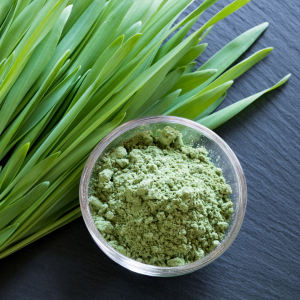Toothaches can strike at the most inconvenient times, causing discomfort and pain that can be challenging to bear. While seeking the expertise of a dental professional is undoubtedly a crucial step in addressing the root cause of toothaches, there exist potent home remedies that can temporarily alleviate these pesky symptoms. Among the array of remedies, three stand out with their remarkable properties for soothing toothache pain: coconut oil, hydrogen peroxide, and clove oil. These remedies not only provide relief but also contribute to maintaining oral health.
When faced with a throbbing toothache, the exploration of home remedies might seem daunting. However, these options offer safety and convenience, ready to be employed frequently to keep your teeth gleaming and your toothaches at bay. From their unique attributes to their ease of use, these home remedies have earned their place as trusted allies in safeguarding your oral well-being.
Coconut Oil:
Coconut oil is a versatile natural remedy with powerful anti-inflammatory and antimicrobial properties. It contains lauric acid, which helps combat harmful bacteria in the mouth, reducing the risk of infection. In addition, coconut oil possesses soothing properties that can ease toothache discomfort.
How to Use:
Take a tablespoon of organic coconut oil and swish it around your mouth for about 15-20 minutes, just like you would with a mouthwash. This technique, known as oil pulling, allows the coconut oil to reach all areas of your mouth, including around the affected tooth. After swishing, spit out the oil and rinse your mouth with warm water. Coconut oil pulling can help reduce inflammation and provide temporary relief from toothache pain.

Hydrogen Peroxide:
Hydrogen peroxide is a mild antiseptic and disinfectant commonly used to clean wounds. Its antibacterial properties can be helpful for treating toothache caused by bacterial infection. It can help cleanse the area around the painful tooth and reduce the number of bacteria present.
How to Use:
Create a mild hydrogen peroxide mouthwash by mixing equal parts of 3% hydrogen peroxide and water. Swish the solution in your mouth for about 30 seconds, being careful not to swallow it. Spit out the mixture and rinse your mouth with water afterward. This rinse can help cleanse the affected area, reducing bacterial activity and providing temporary relief from toothache pain.
Precautions:
– Do not swallow hydrogen peroxide, as it can cause stomach irritation and other complications.
– Always use a 3% hydrogen peroxide solution, as higher concentrations can damage the oral tissues.
– If you experience any adverse reactions or if the toothache persists, consult a dentist for proper diagnosis and treatment.

Clove Oil
Eugenol in clove oil acts as a natural anesthetic by numbing the nerves and tissues around the affected tooth. Additionally, its antibacterial properties help reduce the growth of harmful bacteria in the mouth, aiding in the prevention of infection.
How to use:
Dilution: Clove oil is highly concentrated and can be quite potent. To avoid skin or mucous membrane irritation, it is crucial to dilute the clove oil with a carrier oil, such as olive oil or coconut oil. A safe ratio is approximately one drop of clove oil per teaspoon of carrier oil.
Application: Soak a cotton ball or a clean piece of cloth in the diluted clove oil mixture. Gently apply the soaked cotton ball directly to the affected tooth and the surrounding gums. Avoid placing the oil on the tongue or other sensitive areas of the mouth.
Duration: Allow the clove oil to sit on the affected area for a few minutes, or until you start to feel relief from the pain. It is essential not to swallow the oil.
Rinsing: After the application, rinse your mouth thoroughly with warm water to remove any residual oil. Be cautious not to swallow the clove oil.

Garlic
Garlic contains an active compound called allicin, responsible for its strong aroma and numerous health benefits. Allicin possesses natural antibacterial and antimicrobial properties, making garlic an effective option for oral health. Inflammation around the affected tooth and gums is a common symptom of toothache. Garlic’s anti-inflammatory properties can help reduce swelling and provide relief from pain and discomfort.
How to use:
Crush a garlic clove to release the allicin and place it directly on the affected tooth or gum area. Gently bite down on the clove to allow the juices to reach the affected area. Leave it in place for 15-20 minutes or until you experience relief.
Garlic Paste: Crush a few garlic cloves and mix them with a small amount of water to create a paste. Apply the paste to the painful area and leave it on for a short period before rinsing with water.
Garlic Oil: You can use garlic-infused oil by soaking crushed garlic in olive oil for a few days. Apply a small amount of the oil to the affected tooth and gums.

Wheatgrass
Wheatgrass is a young grass from the wheat plant, and it is packed with essential vitamins, minerals, and antioxidants. Its nutritional profile includes vitamins A, C, E, and K, as well as iron, calcium, magnesium, and chlorophyll. These nutrients contribute to the healing abilities of wheatgrass.
Wheatgrass contains anti-inflammatory compounds that may help reduce swelling and alleviate pain associated with toothache. The presence of chlorophyll in wheatgrass gives it natural antimicrobial properties. This can help combat harmful bacteria in the mouth, reducing the risk of infection and promoting oral health.
How to Use:
Wheatgrass Juice: Extract fresh wheatgrass juice using a juicer or a blender. Rinse your mouth with the juice, focusing on the area of discomfort, for about a minute. Spit out the juice after rinsing.
Wheatgrass Mouthwash: Mix wheatgrass juice with a small amount of water to create a mouthwash. Swish the mixture in your mouth for about 30 seconds to a minute before spitting it out.
Wheatgrass Compress: Soak a cotton ball in wheatgrass juice and place it directly on the affected tooth or gums. Hold it in place for a few minutes to allow the healing properties to take effect.

By utilizing these remedies, you are not only addressing pain but also taking proactive steps toward maintaining healthy teeth and gums throughout your life. Once the pain subsides and bacteria are managed, you might find that preserving your natural teeth becomes a more achievable goal. Incorporating these methods into your oral care routine ensures that you can maintain your smile’s radiance and enjoy strong teeth and gums as you continue to age gracefully.










